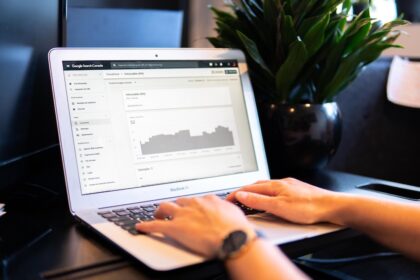Seven tips to optimise your images for SEO
We know that words, especially keywords, are important for SEO. But what about your images? Find out how you can optimise these to get found by Google.
Images are an often overlooked SEO opportunity on your website. Too many companies spend time researching the right search terms, crafting the perfect meta descriptions and writing content they hope will rank on Google. But they’ll miss golden opportunities to boost their SEO with their images.
So what should you be doing to optimise your images for SEO? Here are seven recommendations.
1) Research your keywords
This first tip should be easy for you if you are already working on your SEO. In order to properly name your images, you need to know what search terms you want them to rank for. So make you have researched the best keywords for your business.
What are these keywords? The trick is to find search terms that the people you want to visit your site are putting into Google. And (importantly) to go for terms you stand a chance of ranking for.
If you want to know what these terms are, we recommend watching our free 20-minute video here. In it we explain the different types of keywords, and how to find the right ones for you.
2) Name your images for SEO
Once you know your keywords, you can start naming your images. This is an important but often missed SEO step. Too many websites simply upload images with the name they are given from either the stock photo library they downloaded them from, or by their phone when they were taken.
Search engines like Google check image file names, and if these names don’t help them identify what your photos are of they can’t possibly rank them. Instead, make sure you rename any photos you upload to your website. Choose a name that both describes the content of the photo, and includes your keyword if it is relevant.
For example, if you have an ice cream parlour in Brighton and your photo is of a strawberry ice cream sundae, you might call the photo “strawberry ice cream sundae in Brighton ice cream parlour”
3) Add your images to a sitemap
If you really want to give you images an SEO boost, Google recommends adding them to a sitemap. This can either be your existing sitemap, or you can create a separate sitemap just for your images.
Google notes that adding your images to a sitemap helps them discover images that they might not otherwise find. For example, images your site reaches with JavaScript code.
4) Use image alt tags
When Google crawls your website, it relies on the information you provide to identity what your content is about, and whether it is worth ranking or not. And unlike us, Google is unable to actually ‘see’ your images. So it depends on you telling it what your image is about.
While this job is partly covered by naming your image correctly, your image alt tags also play an important role in letting Google know what your image content is.
If a browser can’t display your image for any reason, your alt tag is displayed as text in its place. They are important for accessibility, too, as they help people who cannot see your images to understand them.
So make you describe the content of your photos in your image alt tags. Use as few words as possible and remember to include any relevant keywords. But only if they genuinely are relevant! Alt tags that are just stuffed with keywords aren’t helpful to Google or users, and can harm your SEO.
5) Remember to use title tags
It is also important to include title tags when uploading images to your website. These are displayed when people hover their mouse over your images, and can help Google to understand the purpose of your image.
Your image title tags can be longer than your alt text and can help to reflect your entire page’s purpose. You can repeat the same words in your image name, alt text and title.
6) Reduce your image size
Your page download speed is an important element os SEO. Google doesn’t want to direct its users to websites that are difficult to use or take a long time to download, so it won’t rank your website highly if it is slow to download.
And large image files can significantly impact your download speed. So make sure you resize or compress any large images before publishing them. It can also help to change your file type. JPEG files take up the least amount of space without compromising on quality. If you have a graphic and you want to retain the quality when zooming in, you may opt for PNG instead. PNGs are higher quality than JPEGs, but are usually a larger file size.
So what are the recommended file sizes for images? As a rule, large images or full-screen background images should be no more than 1 MB, while small web graphics can be 300 KB or less. For full-screen backgrounds, the recommendation is to use an image that’s 2,000 pixels wide. And when given the option with images, always choose “Save for web” as this will give your image a web-friendly resolution.
7) Share your images
When it comes to SEO, links back to your website (backlinks) are important. And if you want people to start linking to your content (and images), you need to start sharing it, so they can find it.
We know that images are highly shareable, especially on social media. So if you have images you want to get found, particularly original visual content, share it on social media, include links in your newsletters and emails and invite your followers and friends to share too.
Love our help to climb the Google rankings?
If you’d like more tips on how you can boost your SEO and climb Google’s rankings for the right search terms, our SEO Masterclass and Easy SEO can help.
Here’s how to work out which one is best for you now:
- Buy our SEO Masterclass if you are a complete beginner and want an easy explanation of how SEO works and want DIY practical advice you can use immediately. (Click on the link for a special, time-limited offer if you buy now.)
- Buy Easy SEO if you are a beginner, or have some SEO knowledge but don’t know how to put it together to do SEO well. Easy SEO walks you through everything you need to know and do for SEO in easy steps.
It’s the easiest (and cheapest) way to do your SEO and help your website to hit that all-important spot on page on of Google for the right search terms.
So if you’re ready to plan your SEO strategy, come and join us inside Easy SEO and get started right now.
Photo by Annie Spratt










